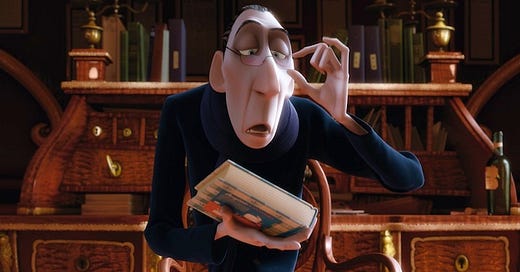It's a Film Bros World, Again
Prepare for a new wave of "where are all the women" in entertainment journalism
Enjoy this formerly paywalled post and consider supporting the independent work at The Film Maven by becoming a paid subscriber. Not only do you get access to the awesomeness below, but you’ll be able to read every paid post including our monthly watch diaries, disability articles, and more. Want to support my work but not Substack? These same posts can be found over at The Film Maven Patreon where you can subscribe, at the same price, without supporting Substack itself. Subscribe and show your support for independent journalism.
Honestly, starting to wonder if I need to call this column “The World is Fucked and We’re All Doomed” these days considering [looks around] everything. But the implications of the world at large always trickle down to other industries and today is a prime example of that. Let’s talk about the loss of women in the entertainment journalism world! It’s a familiar song and dance. When I asked various female film critics about whether they believed the industry would go back to being a boy’s club one said, “Did it ever stop being one?”
She’s not wrong. The entertainment journalism and film criticism tracks haven’t been hospitable to women. It wasn’t until 2018 that movie review aggregator Rotten Tomatoes committed to balancing the scales of gender, expanding their requirements to include more marginalized critics, specifically women. I talked to several female critics who said they were finally able to make it onto RT as a result of this initiative.
As the #MeToo movement started to fall out of favor, the need to include women in entertainment started to reflect that. According to a 2022 study, “In the early months of 2022, male reviewers outnumbered female reviewers by more than 2 to 1. Men comprised 69% and women 31% of reviewers.” And while the percentage of film film reviewers rose from 2016 to 2020, that same study says it declined from 35% in 2020 to 31% by 2022.
And, if you look at the various hobbyist sites out there — which I define as sites run by critics and pay their staff in access — they definitely weren’t inclined to help plump up those numbers. None of the prominent hobbyist sites I found either had an all-women staff or women in any type of leadership or editor role. Even if women were listed on their masthead the ratio tended to be 2:1 towards men. One site only had 1 women at all currently “working” for them. That tracks with that same 2022 study which lays out, “71% of those writing for their own site were male and 29% were female.” Sites like these tend to employ their friends who look like them. Also, remember that most women tend to have other obligations so working for free ain’t a possibility unless they’re working themselves (hey, that’s me!).
But with our current Presidential regime deciding DEI is a four letter word there’s no doubt the fix is in: diversity is no longer cool and it’s only going to get worse for women critics and entertainment journalists to get anywhere. Where, as the random executive told Ryan Gosling’s Ken in Barbie, “We’re actually doing patriarchy very well, we’re just better at hiding it,” there’s no need to hide anything. Corporations and companies are told they don’t need women, critics of color or disabled critics, so why hire them?
Within the last year PMC has seen high profile writers and editors exit the company, including Rebecca Sun and Lesley Goldberg. The company’s DEI editor was fired. There were also layoffs at Deadline and IndieWire within the last three years. From personal experience, I’ve interviewed at two prominent entertainment-based companies — both in journalism and outside it — and made it to the last round only to have them hire a white male.
Only two major entertainment journalism corporations put out diversity breakdowns — PMC (which owns Variety, THR and Deadline) and Hearst (which owns People). PMC, to their credit, touts that 55% of their workforce is women and 53% of their leadership is women. Mind you, 65% of their employees also identity as white, as does 69% of their leadership so odds are white women are the dominant group. And at Hearst, 48% of their employees are women with 44% being in management jobs. (70% of their employees identity as white with 77% in management so….yeah.)
It’ll be interesting to see how those numbers skew over the next year. For women looking for a staff job in 2025, it’s been hard and it will only get harder. Going back to that 2022 study, 76% of those on staff at publications/sites/stations were male and 23% were female.”
Women are the first to leave most job sectors, but in the entertainment journalism and critic game there’s no doubt that is a certainty. Women tend to have more obligations at home and certainly can’t work for free. If they’re already losing out on staff jobs odds are they’ll have to walk away from the industry entirely. I keep saying things are going to return to the “bad old days” and this is where I see it happening most clearly. Just like in the 2010s, people will be surprised at how few women are film critics or writing about entertainment. We’ll get more studies and maybe a few more rounds of trying to bump inclusion numbers.
But the tale is old as time and I’m not sure what can be done to fix it short of, ya know, dismantling the patriarchy. However, if anything I want to see more women at least running their own hobbyist sites and doing better than the guys are (you know, like trying to pay staffers). If anything, we need to do like Ken, ride some horses, and keep on fighting.





